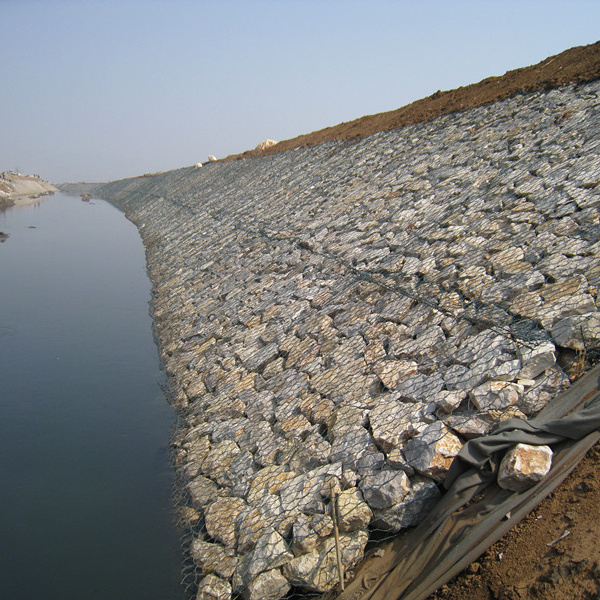ធ្នូ . 29, 2024 19:45 Back to list
Exploring Gabion Aggregates in China for Sustainable Construction Solutions
The Role of Gabion Aggregate in Modern Construction
In the realm of modern construction and civil engineering, innovative materials and techniques continually emerge to address various challenges. Among these materials, gabion aggregates have gained significant prominence. Originating from the Italian word gabbione, meaning big cage, gabions are wire mesh containers filled with rock or other suitable materials. Their application ranges widely, notably in stabilization, erosion control, and architectural design. This article will explore the significance of gabion aggregates in construction, particularly in the context of China, where rapid urbanization and infrastructural development pose unique challenges.
Understanding Gabion Structures
Gabion structures consist of various forms, including walls, baskets, and fences, all designed to serve specific functions. The basic unit is a wire mesh box that is filled with rocks, stones, or other aggregates. The flexibility of gabions makes them ideal for various applications, as they can conform to the landscape and absorb strains from environmental forces. Their permeability allows water to flow through, reducing hydrostatic pressure, which makes them particularly effective in preventing erosion on riverbanks and slopes.
Benefits of Gabion Aggregates
1. Cost-Effectiveness Gabions are often a more economical choice compared to traditional building materials. The use of locally sourced rocks or aggregates can significantly reduce transportation costs. Additionally, the installation process is relatively straightforward, requiring minimal machinery and labor compared to concrete or brick structures.
2. Environmental Sustainability The use of gabion aggregates aligns with sustainable construction practices. They are made from recyclable materials and can be filled with natural stones. By incorporating gabions, construction projects often achieve better ecological compliance, particularly in sensitive areas.
3. Stability Against Natural Forces Gabions provide excellent resistance against soil erosion, making them suitable for use around bridges, roads, and in landslide-prone areas. The structures can absorb shock and pressures from floods or landslides, providing increased stability.
4. Aesthetic Appeal Gabion structures can be designed artistically, offering an appealing visual element to public spaces, parks, and private properties. They can be integrated into landscaping, serving as decorative elements or functional seating areas while blending seamlessly with the environment.
china gabion aggregate

Gabion Application in China
China's rapid urban growth and infrastructural demands have led to an increased interest in gabion aggregates. As cities expand and face the risks associated with environmental challenges—such as floods, landslides, and soil erosion—gabions have emerged as a viable solution.
1. Erosion Control and Riverbank Stabilization Many of China’s rivers are prone to erosion due to seasonal flooding or human interference. Gabions are used extensively for stabilizing riverbanks, effectively managing water flow and preventing soil loss, which is crucial for maintaining waterways' health and protecting surrounding settlements.
2. Landslide Prevention With the mountainous terrain present in many regions of China, landslide risks are significant. Gabions serve as effective barriers against landslides, absorbing the impact of falling earth and providing structural reinforcement to steep slopes.
3. Urban Development In urban areas, gabions are utilized for aesthetic projects, such as creating green walls or decorative features in parks. Their versatility allows designers to harness gabion technology to enhance the visual and functional aspects of urban landscapes.
4. Infrastructure Projects Gabions are increasingly incorporated into the construction of highways, bridges, and retaining walls, helping to support structures while managing water runoff and preventing erosion around these critical infrastructures.
Conclusion
The versatility, sustainability, and cost-effectiveness of gabion aggregates make them an indispensable tool in the modern constructor's toolkit. As China continues to face the complexities of rapid urbanization and environmental challenges, the integration of gabions into construction projects illustrates a forward-thinking approach. Their ability to blend functionality with aesthetic appeal positions gabion aggregates not only as a practical choice but also as a stylish solution in the ever-evolving landscape of construction. With ongoing advancements and innovations, the future of gabion technology in China and globally looks promising, paving the way for safer, more resilient infrastructures.
-
Visualizing Gabion 3D Integration in Urban Landscapes with Rendering
NewsJul.23,2025
-
The Design and Sustainability of Gabion Wire Mesh Panels
NewsJul.23,2025
-
The Acoustic Performance of Gabion Sound Barriers in Urban Environments
NewsJul.23,2025
-
Mastering the Installation of Galvanized Gabion Structures
NewsJul.23,2025
-
Gabion Boxes: Pioneering Sustainable Infrastructure Across the Globe
NewsJul.23,2025
-
Custom PVC Coated Gabion Boxes for Aesthetic Excellence
NewsJul.23,2025
-
Installation Tips for Gabion Wire Baskets in Erosion Control Projects
NewsJul.21,2025






